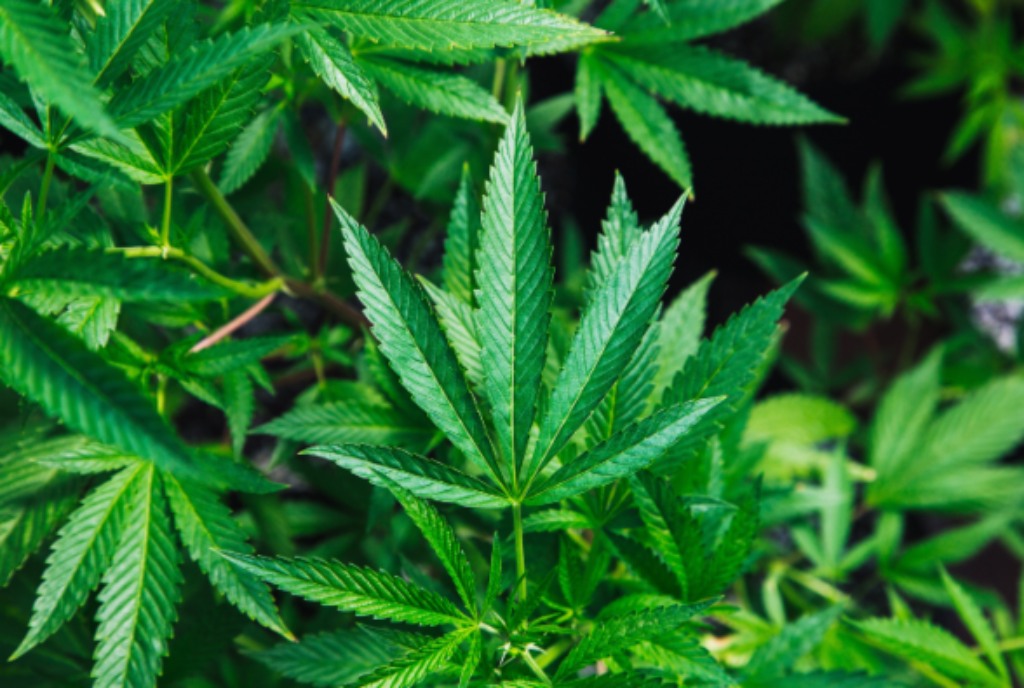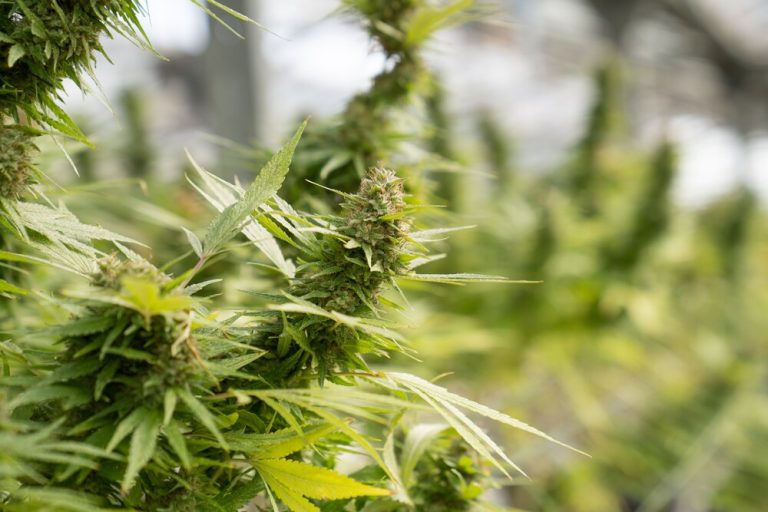
The vegetative stage of weed is a crucial period in its growth and development. During this stage, the plant focuses on building a strong root system, growing taller stems and leaves, and preparing itself for the flowering stage. Understanding the vegetative stage is important for any grower who wants to cultivate a healthy, productive weed plant. In this article, we will dive into the basics of the vegetative stage, including how to determine when it is over, how long it takes, and how to care for your plants during this stage.
Contents
The Three Stages of Weed Growth
The growth of a weed plant can be divided into three distinct stages: the vegetative stage, the flowering stage, and the harvest and drying stage.
- Vegetative Stage: This is the stage where the plant focuses on developing leaves, stems, and roots. The goal of the vegetative stage is to promote healthy and robust plant growth, which will be crucial for producing a high-quality harvest.
- Flowering Stage: This is the stage where the plant begins to produce buds and flowers. The length of the flowering stage will vary depending on the strain and the specific growing conditions, but it typically lasts between 6 and 12 weeks. During this stage, the plant will be focused on producing as much resin and THC as possible, which will determine the potency and yield of the final product.
- Harvest and Drying Stage: This is the stage where the buds and flowers are harvested and dried. The drying process is crucial for removing excess moisture from the buds, which will improve their potency, flavor, and overall quality. After drying, the buds are typically trimmed and cured, which will further improve their quality and prepare them for use.
It’s important to understand each stage of the growth cycle, as the success of the final product depends on proper management and care throughout each stage.
What is the Vegetative Stage of Weed?
The vegetative stage of weed is the period of its growth when it focuses on developing leaves, stems, and roots. During this stage, the plant is not yet producing flowers or buds, but it is actively growing and strengthening itself. The main focus of the plant during the vegetative stage is to build a robust root system, grow taller stems, and develop more leaves. These efforts help the plant prepare for the flowering stage when it will begin producing buds and flowers.
In the vegetative stage, it is important to provide the plant with enough light and nutrients to encourage healthy growth. As the plant grows taller and stronger, it becomes better equipped to handle the demands of the flowering stage and produce a bountiful harvest. Understanding the vegetative stage of weed plants is an essential part of cultivating a successful crop.

How Long Does the Vegetative Stage last?
The amount of time it takes for a weed plant to finish the vegetative stage depends on several factors, including the strain, growing conditions, and lighting schedule. Some cannabis strains may reach the end of the vegetative stage more quickly than others, while others may take longer. In general, it is safe to assume that most weed plants will complete the vegetative stage within 4 to 8 weeks from seedling stage.
The growing conditions, including temperature, humidity, and the quality of the soil or growing medium, can also impact the length of the vegetative stage. For example, a warm and humid environment may accelerate the growth of the plant, whereas a cool and dry environment may slow it down.
Additionally, the lighting schedule also plays a crucial role in determining how long it takes for a weed plant to reach the vegetative stage. The plant needs a specific amount of light per day to enter and stay in the vegetative stage. It is recommended to provide the plant with 18 to 24 hours of light per day during the vegetative stage, with the optimal time being 20 hours.
It’s important to remember that these are general guidelines, and your individual plants may take more or less time to complete the vegetative stage, depending on the specific circumstances.
How Many Hours of Light Does Vegetative Weed Need?
During the vegetative stage of weed, it’s crucial for the plant to receive the optimal amount of light. The plant requires a significant amount of light energy to grow and develop properly. This is why it’s recommended to provide weed plants with 18-24 hours of light per day during the vegetative stage.
Exposure to this amount of light will help the plant develop strong stems, leaves, and roots, which are all essential for producing a healthy and abundant harvest.
It’s also important to note that light intensity and quality play a significant role in the growth and development of a weed plant. Ensure that the light you provide your plants is bright, full-spectrum light that is specifically designed for use in indoor gardens. This will help maximize the amount of light energy the plant absorbs, leading to stronger, healthier growth during the vegetative stage.
How Often Should I Feed My Weed Plants in the Vegetative Stage?
Feeding is an important aspect of maintaining healthy and vigorous growth in plants during the vegetative stage of weed. It’s recommended to feed your plants every 2-3 days with a high-nitrogen fertilizer, which will help promote strong leaf growth and support the plant’s overall health.
It’s essential to follow the instructions on the fertilizer label carefully, as over-fertilizing can lead to nutrient toxicity, which can cause damage to the plant. Additionally, be sure to adjust the fertilizer according to the plant’s needs as it grows and develops.
It’s also recommended to alternate the fertilizer with a source of pure water every 2-3 days to help flush out any buildup of salts in the soil, which can also cause damage to the plant.
Remember, feeding is a critical aspect of growing weed plants during the vegetative stage, and it’s essential to provide your plants with the proper nutrients and care to ensure healthy growth and development.
When Should I Switch from Vegetative to Flowering?
The timing of the switch from the vegetative stage of weed to the flowering stage will depend on various factors, including the strain, growing conditions, and the desired outcome.
In general, when the plant has reached its desired height and size, and the days are getting shorter, it is time to switch from the vegetative stage to the flowering stage. This is typically achieved by reducing the amount of light the plant receives each day. A reduction from 18-24 hours of light per day to 12 hours of light and 12 hours of darkness will signal the plant to start producing buds and flowers.
It’s important to note that the light schedule plays a critical role in triggering the switch from the vegetative stage to the flowering stage. The plant will only begin to produce buds and flowers when it is exposed to a consistent light schedule of 12 hours of light and 12 hours of darkness.
Therefore, it is crucial to monitor your plants closely during the vegetative stage and to be prepared to make the switch to the flowering stage when necessary. A successful transition from the vegetative stage to the flowering stage is crucial for producing a healthy and bountiful harvest.
Does Longer Veg Time Increase Yield?
One of the common questions that growers have is whether a longer vegetative stage will result in a higher yield. The answer is not straightforward, as the relationship between vegetative time and yield can be complex.
In general, a longer vegetative stage can increase yield, as the plant has more time to develop a strong root system, bigger leaves, and more stems, which can support larger buds. However, the amount of increase in yield is not significant, and there is also the risk of plants becoming too big and difficult to manage, especially if you are growing in a limited space.
Additionally, the increase in yield due to a longer vegetative stage may be offset by factors such as reduced light quality or light intensity, which can slow down the plant’s growth or even cause damage.
Ultimately, the best way to increase yield is to provide your plants with optimal growing conditions, including proper lighting, temperature, humidity, and nutrition, and to choose strains that are known for producing high yields.
While a longer vegetative stage may result in a slightly higher yield, it’s not the most significant factor in determining the final yield, and there are other factors that have a greater impact on the final outcome.
What Does Vegetative Bud Mean?
Vegetative buds refer to the leaves and stems that are produced by a weed plant during the vegetative stage before it begins to produce flowers or buds. These buds are a crucial part of the plant’s development and are responsible for supporting the growth of the plant and providing the energy it needs to produce buds later on.
During the vegetative stage, the focus of the plant is on producing leaves, stems, and roots, which absorb light and nutrients to support growth. The leaves and stems produced during this stage are commonly referred to as vegetative buds, and they are a key factor in determining the plant’s overall health and productivity.
Should I Cut Bigger Leaves in the Vegetative Stage of a Weed Plant?
In the vegetative stage of weed, it is recommended to remove larger leaves to allow light and energy to reach the lower parts of the plant and promote bushier growth. This process is known as “topping” or “pruning” and is a common practice among growers looking to optimize their plant’s growth.
When larger leaves are removed, the plant redirects its energy to developing smaller leaves and stems, which in turn leads to more branching and a fuller, bushier plant. This, in turn, allows for more efficient light absorption and increased yields.
It’s important to note that not all larger leaves should be removed. Only the biggest and oldest leaves should be trimmed to avoid stress to the plant. The timing and frequency of pruning will depend on the strain and growing conditions, so it’s best to consult with a grower or horticulturist for specific guidance.
In conclusion, the vegetative stage of weed is a critical time in the plant’s growth. A strong and healthy vegetative stage lays the foundation for a bountiful harvest and successful flowering stage. Understanding the timing, lighting, and nutrient needs during the vegetative stage will ensure that your weed plants are off to a great start. With proper care, your plants will develop healthy stems, roots, and leaves, putting them on the path to a successful harvest. Remember, the vegetative stage sets the stage for the rest of the growth cycle, so take the time to get it right.






